A visit to Box Elder County yesterday morning resulted in a very close encounter with a male (I believe) Short-eared Owl in flight.
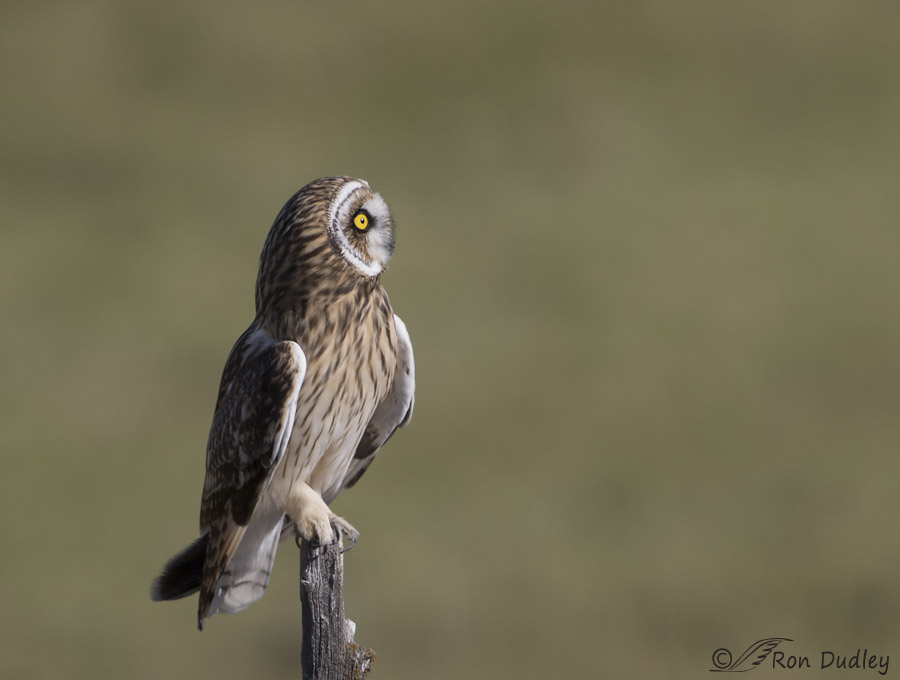
1/2500, f/6.3, ISO 500, Canon 7D Mark II, Canon EF500mm f/4L IS II USM +1.4 tc, not baited, set up or called in
I found him hunting from a fence line in a wet agricultural area. When he perched on this old fence post he was side-lit but still stately and very handsome.
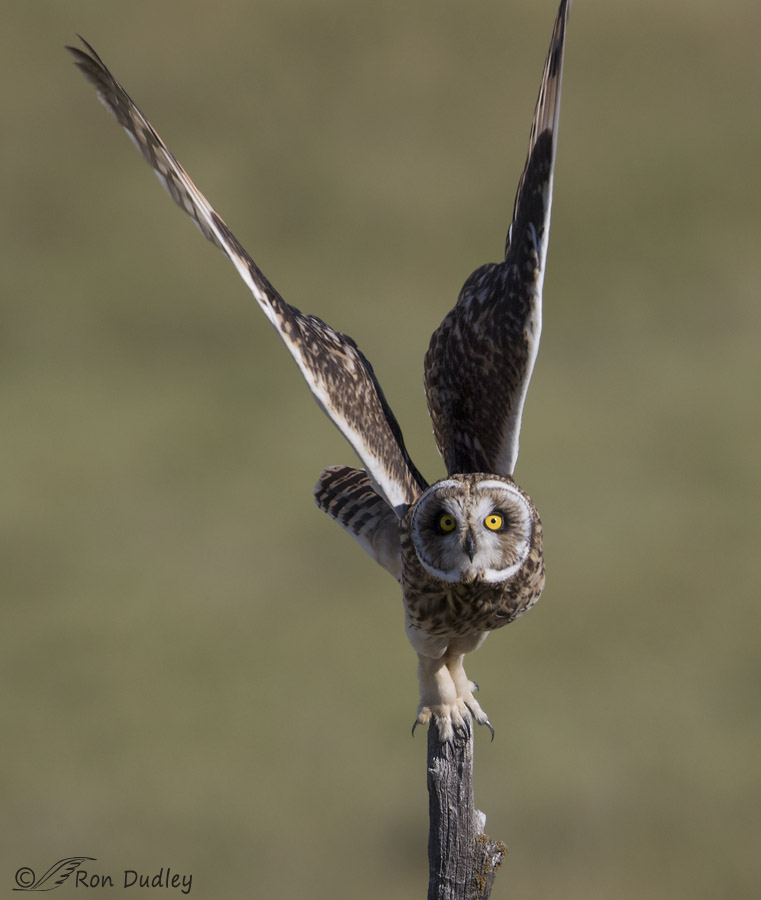
1/2500, f/6.3, ISO 500, Canon 7D Mark II, Canon EF500mm f/4L IS II USM +1.4 tc, not baited, set up or called in
Then he turned on his perch, looked directly at me and launched…
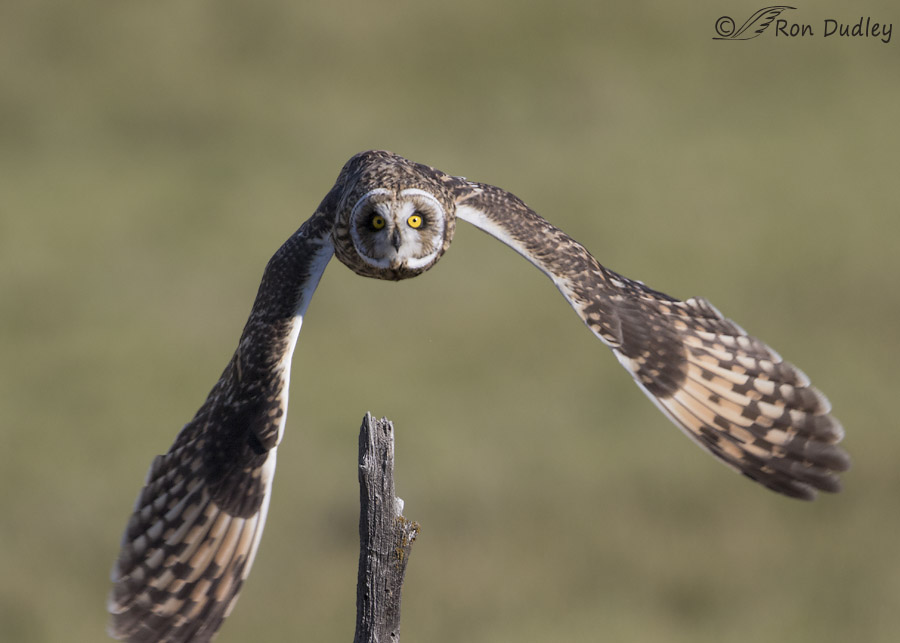
1/2500, f/6.3, ISO 500, Canon 7D Mark II, Canon EF500mm f/4L IS II USM +1.4 tc, not baited, set up or called in
in my direction. And he stayed the course. Viewers can judge how directly he came at me by noticing how the former post perch stays right behind the bird in all but the last of the following images.
There are flaws in some of these images. I clipped some wings, the light angle was less than perfect and some shots are sharper than others but collectively they do give the viewer a sense for what I experienced with this audacious owl.
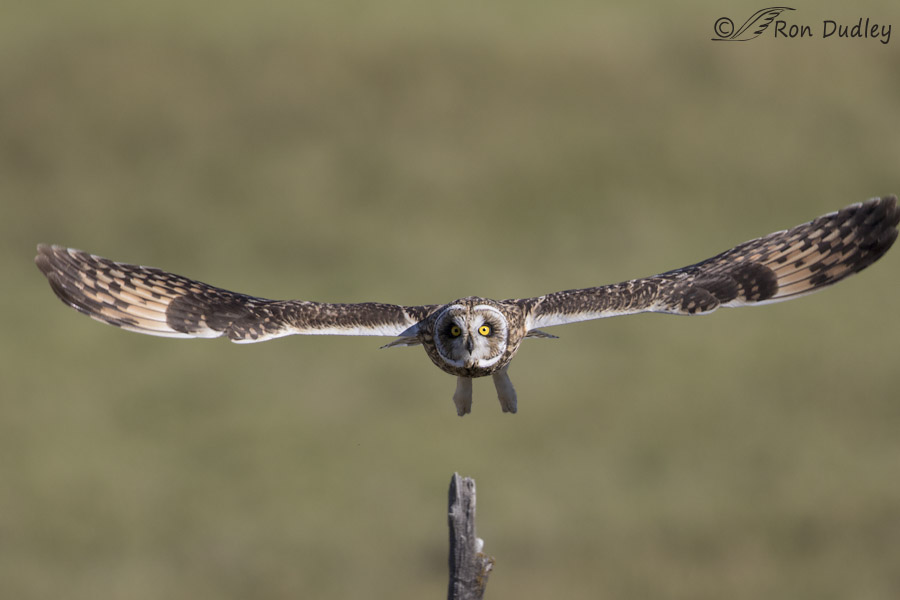
1/3200, f/6.3, ISO 500, Canon 7D Mark II, Canon EF500mm f/4L IS II USM +1.4 tc, not baited, set up or called in
I expected the owl to veer off very soon after takeoff but it didn’t. It just kept coming…
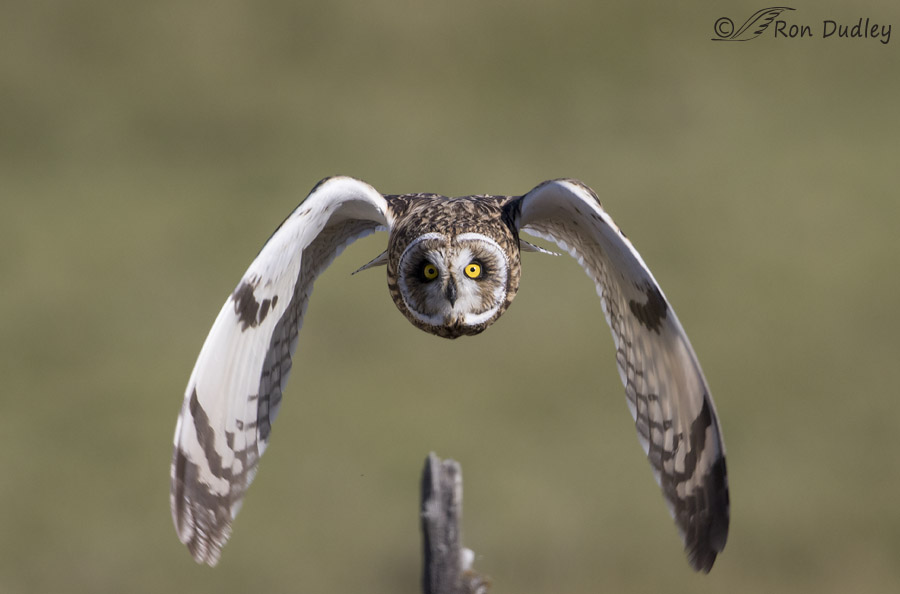
1/2500, f/6.3, ISO 500, Canon 7D Mark II, Canon EF500mm f/4L IS II USM +1.4 tc, not baited, set up or called in
and coming.
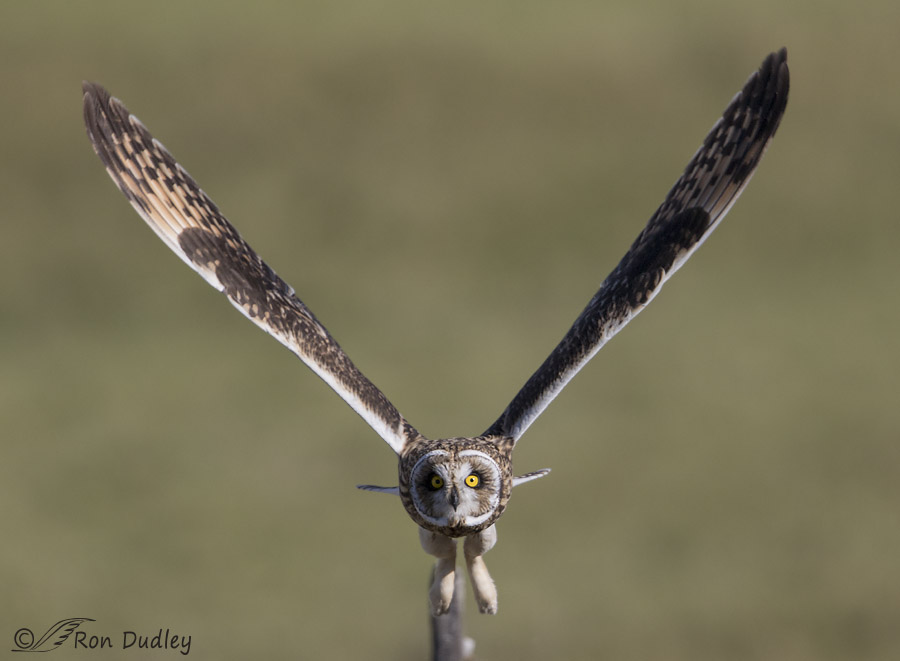
1/2500, f/6.3, ISO 500, Canon 7D Mark II, Canon EF500mm f/4L IS II USM +1.4 tc, not baited, set up or called in
What I was seeing through my viewfinder was really quite intense. I think I know how a vole feels when one of these birds is coming in after it.
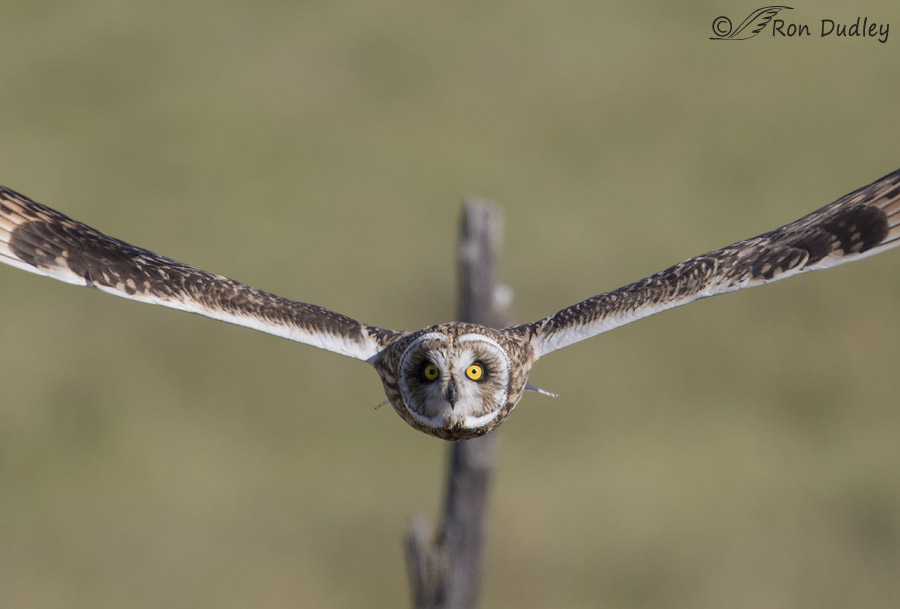
1/2000, f/6.3, ISO 500, Canon 7D Mark II, Canon EF500mm f/4L IS II USM +1.4 tc, not baited, set up or called in
I clipped wings on many shots and chose to crop some of them like this.
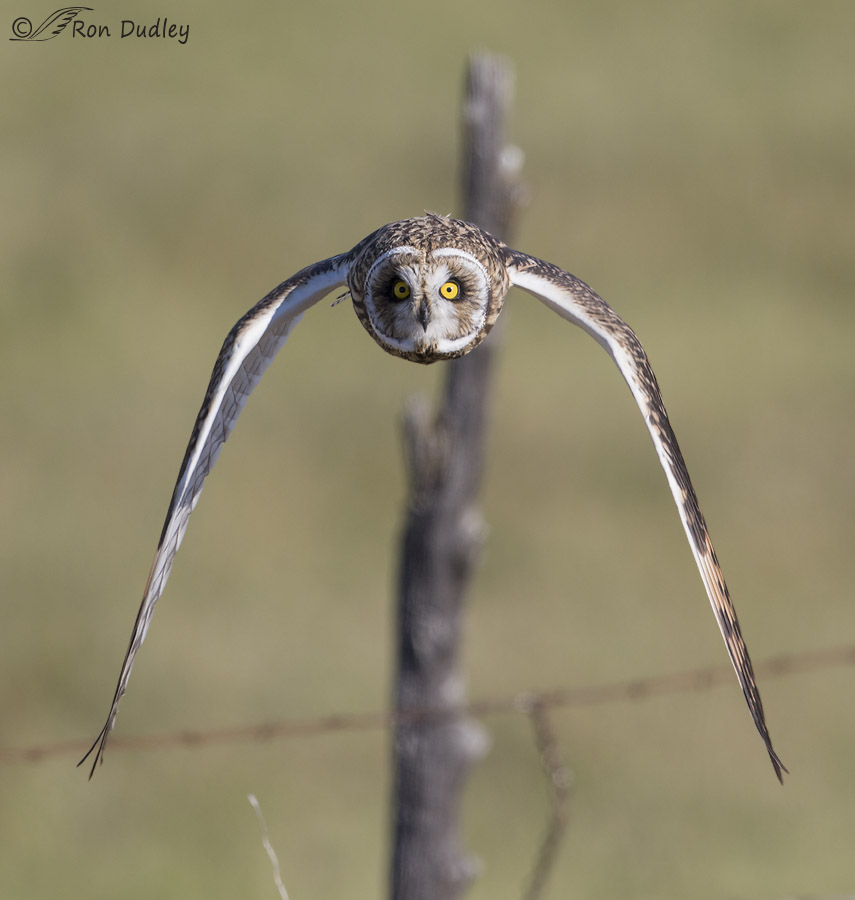
1/2000, f/6.3, ISO 500, Canon 7D Mark II, Canon EF500mm f/4L IS II USM +1.4 tc, not baited, set up or called in
In many (perhaps most) images we see of owls coming directly at the photographer the bird has been baited with live mice but I want to make it perfectly clear that this bird was not baited or manipulated in any way.
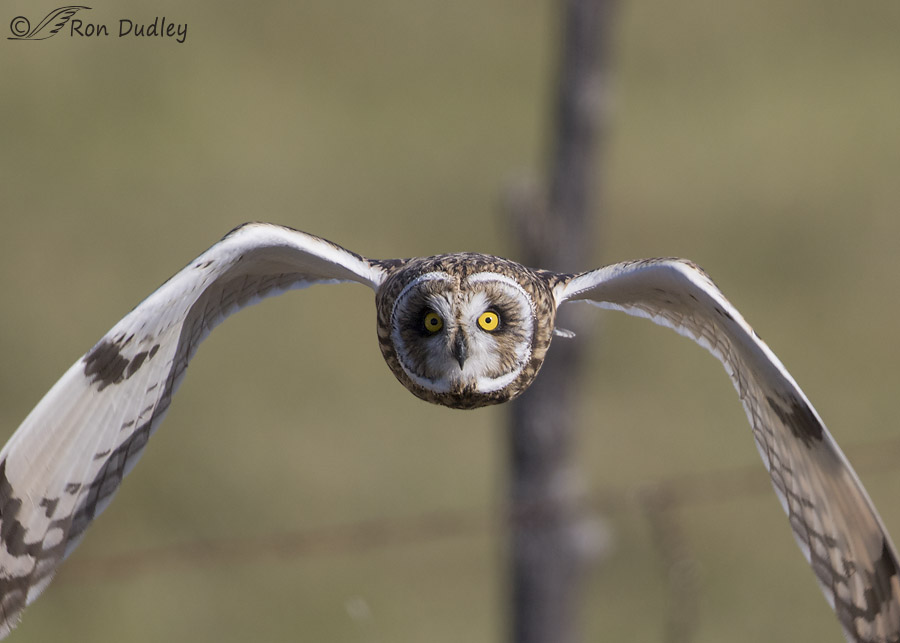
1/2500, f/6.3, ISO 500, Canon 7D Mark II, Canon EF500mm f/4L IS II USM +1.4 tc, not baited, set up or called in
Even at this point we still see the post directly behind the owl. I was definitely in this birds crosshairs.
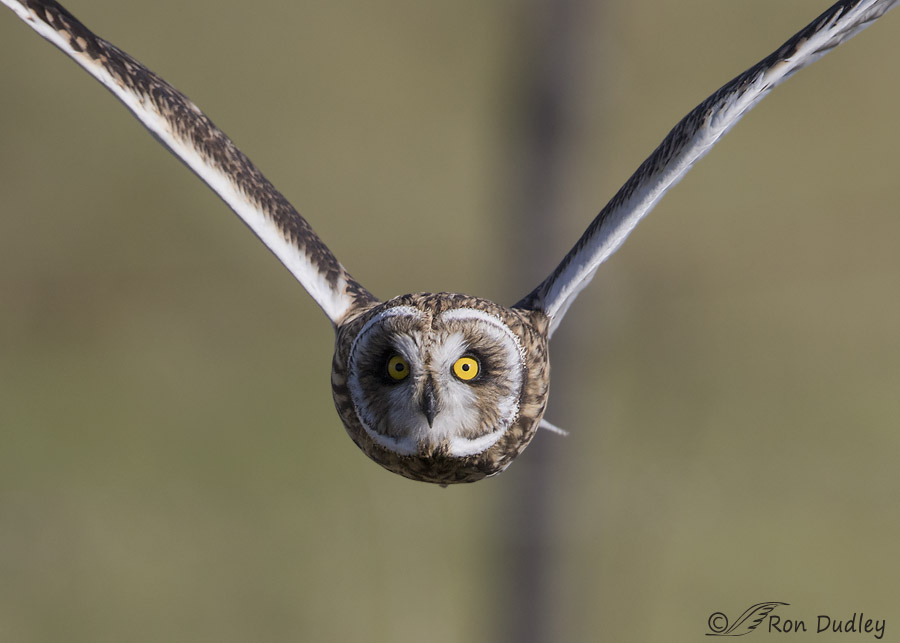
1/2500, f/6.3, ISO 500, Canon 7D Mark II, Canon EF500mm f/4L IS II USM +1.4 tc, not baited, set up or called in
Soon I wasn’t getting much more in the frame than the body of the bird and the base of its wings.
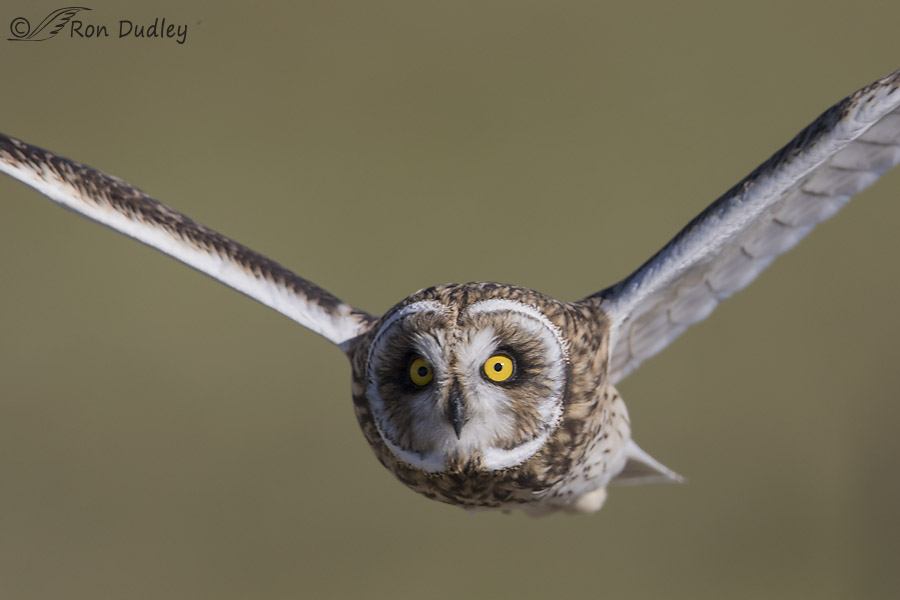
1/2500, f/6.3, ISO 500, Canon 7D Mark II, Canon EF500mm f/4L IS II USM +1.4 tc, not baited, set up or called in
This final image isn’t as sharp as the others but I wanted to include it because it’s full frame (uncropped) so it gives the viewer a sense for how close I was when it was taken. I lost focus after this image but after that the owl came in even closer. I estimate it was less than 10 feet from my window when it finally veered off and I watched it with my naked eye as it did so. As one might expect from an owl I didn’t hear the slightest sound as the bird flew by my open window in an impressive display of natural stealth “technology”.
I was able to get 29 shots of this owl in flight as it came at me. The fourth and last images in this post are full frame.
This was an experience I won’t soon forget. I’ve photographed many Short-eared Owls over the years but I’ve never had one come in anywhere near this close. It makes me wonder if the bird had spotted its own reflection in my lens and came in to investigate.
Or maybe I look more like a juicy giant vole than I think I do…
Ron
PS – Sorry for the late post but I had some “technical difficulties” this morning.


What a wonderful experience and shots Ron! Thanks so much for sharing!
Charlotte
What a great experience, Ron. Your photo series gives me and all of your fans the pleasure of living vicariously through your adventures! Thank you.
What an incredible series! I love it. Thanx for making my day, Ron.
I have noticed many birds don’t like me looking at them either with my glasses or binoculars. Just a brief look can cause smaller birds to fly away before you can get them into focus with your binoculars. Many take off after my binoculars are trained on them.
For most birds, this might be considered a reaction to avoid predation = the fixed look of this predator.
Did the owl react to you as an unknown ground (mammalian) predator in its territory? Do they do the same thing when canids or mustelids or felids move into an area? Those predators aren’t telling us anything about it but they might have been “checked out”.
I too thought maybe the Owl was after the lens. How exciting, and great shots. Glad the Owl veered off, and you are ok. The look in the Owl’s eyes was a look of determination.
Jean, I was being a little facetious with the tone of my post – I really wasn’t worried that the owl would attempt to attack me. But this close approach sure got my attention.
Ooooh.
Even at my desk I marvelled at the intensity of that focus.
Glad you enjoyed it, EC. Thank you.
Wow Ron!, what an amazing experience! You did a great job of keeping the beautiful owl in the frame as it came towards you. I love the strong focus of the owl’s eyes on you. I love seeing photos like this from photographers like you that have the highest integrity — more proof that owls do not need to be baited for photographers to get images like these. It would be great if Audubon or other publications showed your images along with your story (with emphasis on natural behavior of the owl).
Ed – IMO, baiting birds for purposes of photography is an unethical act at best and the practice is especially common with owls. I have the same feelings about using flash on owls at night. I’m like you in that I want natural behaviors (and natural light) in my images. Thanks very much for your comment.
How super exciting Ron! And you have mad skill to keep the focus on the incoming sequence! I would have gotten a complete blur after the first 2 frames with the second frame a bit out of focus already. I agree it’s one of the best experience to see a wild owl flying towards you naturally without bait/call. I would have been so happy I couldn’t fall asleep that night. Bravo!
I’m betting you would get the bird sharp too, Tin Man – maybe sharper than my shots. Thank you.
Wonderful shots Ron, and what an experience. Had the same thing happen to me with a snowy owl last year.
Thanks, Rich. It gets your attention, doesn’t it?
Adrenalin running! Fantastic experience and great shots. I felt like I was there!
I thought I used up all the adrenalin as this bird was coming at me, Jane. Thank you.
Outstanding, Ron! I can only imagine the looks on your faces after that experience. Probably couldn’t get that smile off your face all day. The conversation on the ride home must have surely included SEO’s and excluded the Donald. Nicely done!
You’ve got that right, Neil – it was the epitome of a ****-eating grin and it lasted a good long while. I could hardly wait to get home and download the images to see if they were sharp enough, something you really can’t evaluate on your camera screen (as you know very well, I’m sure).
I try very hard to ignore the Donald…
Sooo impressed with the ability of your gear to maintain focus on a bird
flying directly at you. This speaks well for the quality of the gear
you have chosen, and also for your skill as a photographer. Well done Ron,
very well done…. ;-)))
That’s one of the reasons why I’m very happy with the 7D Mark II, Roger. Thank you.
Incredible photos, Ron! I love your narrative of the series of photos. I notice that the talons were still tucked up under the owl’s body. If you were prey, wouldn’t you have seen the talons coming down and out?
I love the responses of some of your fans. There are some real comedians in the group. I laughed out loud about the flowers not flying!
Safe and exciting adventures ahead, Ron! Thank you!!!
Deborah, The talons wouldn’t be lowered for prey until the very last moment because doing so interferes with efficient flight and airflow and increases drag. But if I had been prey that likely would be one of my very last memories…
I’m speaking from curious ignorance…. any chance that owl could have seen it’s reflection in the lens? The intensity is amazing, I can imagine how you were feeling during and after that encounter!
“any chance that owl could have seen it’s reflection in the lens?”
I wondered the same thing, Victoria – which is why I mentioned that possibility in my text. Who knows…
Amazing shots of that intensity.
Thanks, Ron
Thank you, Diana.
I so appreciate the experiences you translate to us, your “audience”, every single morning , and I never would have expected a prey’s eye view of a predator !
Intense and wonderful—thanks
“a prey’s eye view of a predator”
That’s a good way to put it, Kris. Needless to say I didn’t expect it either.
Ron, you are too bony to be a juicy vole… What a wonderful series of shots! Much as I love being close to birds and other wild animals, I think I would have been a bit nervous had I been in your position, given the bird’s intense focus.
What a wonderful series of shots! Much as I love being close to birds and other wild animals, I think I would have been a bit nervous had I been in your position, given the bird’s intense focus.
“you are too bony to be a juicy vole”
You’ve got that right, Susan. I’m both bony and tough.
And they (Cornell’s range map) say these guys only live in Utah in the winter… psh.
Great shots!
Wow, Shaila, Cornell usually has better accuracy than that. I’ve photographed SEO’s on Antelope Island (in Utah) many times in the past.
I agree! I saw a SEO up Farmington Canyon earlier this summer. I felt pretty sure about what I saw being a native to Oregon where they are plentiful, but when I checked it against my guide and Cornell’s “All About Birds” identification site it shows all of Utah in the blue winter zone and I admit I doubted what I saw for a minute. In all fairness, the Idaho border is where it shifts to year round, so kind of close.
Shaila, Where I photographed this bird is only a handful of miles from Idaho but Antelope Island (where I’ve often photographed SEO’s in the summer”) is many miles south of there. I don’t blame Cornell – birds obviously don’t consult range maps before they decide where to live or migrate through…
Ron, this year I can attest to the fact that birds don’t consult anyone about what they do. When we arrived on the Outer Banks of NC in mid-May, on Ocracoke Island I saw a Ruddy Turnstone and a large flock of Red Knots. Even worse, further north, on the beach in Duck NC, in July I saw what had to be a Whimbrel – no other bird I know of has a beak like that. That bird especially should have been long gone. We also saw an American Black Duck washed up on the beach in Duck in July. He shouldn’t have been there, either. Poor guy was pretty beat up, but still alive. Who knows why we see these things? But at least for us, this has really been a year for seeing out-of-place birds.
It’s always an exciting moment when a birder (or bird photographer) finds a bird out if its normal range, isn’t it, Susan?
Gee Ron, I really don’t think he was thinking you a large juicy vole, but the one on your shoulder! As excellent a photographer that you are I am dumb founded you didn’t notice that vole on your shoulder!!!
Absolutely great shots, You had to be chuckling as your camera was popping image after image while he was coming right at you!
Wonderful post!
Thanks, Dick. This time I wasn’t chuckling. I was just mesmerized and trying not to screw up the photographic opportunity. I wouldn’t have been able to sleep for a week if I hadn’t been able to lock onto the bird pretty well…
Wow! It is a fascinating series, Ron! Perhaps he was just curious about the giant “eye” looking at him.
Thanks, Brett. Could be but with their excellent eyesight I doubt he’d have had to risk coming in so close to satisfy his curiosity. I just don’t know…
Great images, how did you keep it in focus? I get so excited when something happens quickly I seem to forget everything. I guess that is why I do flowers, most of the time they don’t fly.
“how did you keep it in focus?”
I’m not sure, Jo. I guess instinct and muscle memory just took over and everything worked out fairly well. And the relatively new 7D Mark II was also a factor. Some of the images aren’t as sharp as I’d like them to be but I’m still not complaining…
What a wonderful series!! And exciting! You truly never know what each moment will bring. I’m amazed by the length of her wings…
Yes, their wings are very long, Deborah. And notice how “spatulate” the ends of them are in the third image. That shape would really give them a lot of lift in the down stroke and I suspect it accounts for the “moth-like” flight of many owls.
Wow–how amazing and wonderful Ron! To have an encounter like this with any wild animal is special–and an SEOW is especially special! I also appreciate that you post photos of clipped wings–as you may know from a recent post of mine on Facebook, I’m a real “pro” at clipping wings Thanks for sharing your stories and images–they really bring us right there with you.
Thanks for sharing your stories and images–they really bring us right there with you.
Christine, I’ve become slightly more immune to posting images with clipped wings but for me it’s still a glaring imperfection. I have to learn to be a little more flexible I guess. Thank you.
My gracious, Ron. Did you check your roof to see if there was a vole taunting that owl? This is so intense. I think I might have thought about ducking.
“Intense” is the right word, Arwen. I’d really like to know what motivated the owl to come at me like that. Maybe it was just curiosity but it seems to me that curiosity could be satisfied from a much greater distance…